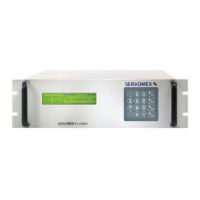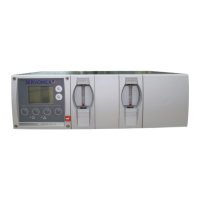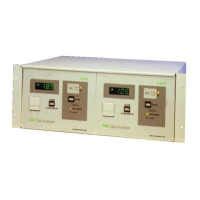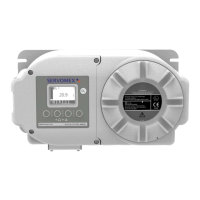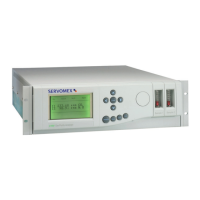5.9
Ensure all items are thoroughly clean and dry before reassembly, which is the reverse
procedure but with the following points noted:
• The windows should be 'floated' into place squarely using a hand aspirator or
equivalent, reversing the removal procedure.
• Use new 'O' rings and other cell sealing kit items making sure that all dust, hairs
etc, are rigorously excluded from them. Ensure the window surfaces are also
free from solvent residues or finger grease.
• The locking ring has a coated thread to prevent seizure – PTFE tape is not
required. The locking ring should be tightened down in stages, pausing for a
moment between stages until the metal faces of the cell body and locking ring
meet when fully tightened, with no gap between them. Where Teflon 'O' rings
are being used, this will require significant torque, with longer pauses. DO NOT
use the cell inlet/outlet stubs as levers.
After re-assembly, perform a leak check on the cell using a manometer before installing
it in the 2500. Do not submerge the cell or fill it with water.
Re-installation of the complete cell assembly onto the 2500 is the reverse of the
dismantling process with the added requirement that, unless fitted with a purge, the end
bosses should be briefly flushed with clean dry nitrogen after the cell has been
mounted and then new absorbent scrubbers should be quickly screwed into them. Be
sure to fully tighten the screws holding the source end casting onto the mounting
chassis if they have been slackened.
Finally, connect up the cell thermocouple to the cell body, reconnect the cell heater
plug (where fitted) and connect up any purge connections and the process
connections. Return the analyser to service as described in Section 4.5.
Reset zero if necessary on a true zero sample.
5.6 Routine Leak Checks
WARNING
It is the users responsibility to keep all sample connections to the 2500
sample cell, purge connections (if fitted) to the end bosses and steam coil
connections completely free from leaks. All plumbing connections should
therefore be regularly inspected for signs of leakage and urgent corrective
action taken if any are found. This is especially important for process
samples, which are flammable, toxic, liquid, or any combination of these.
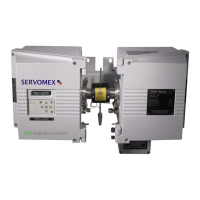
